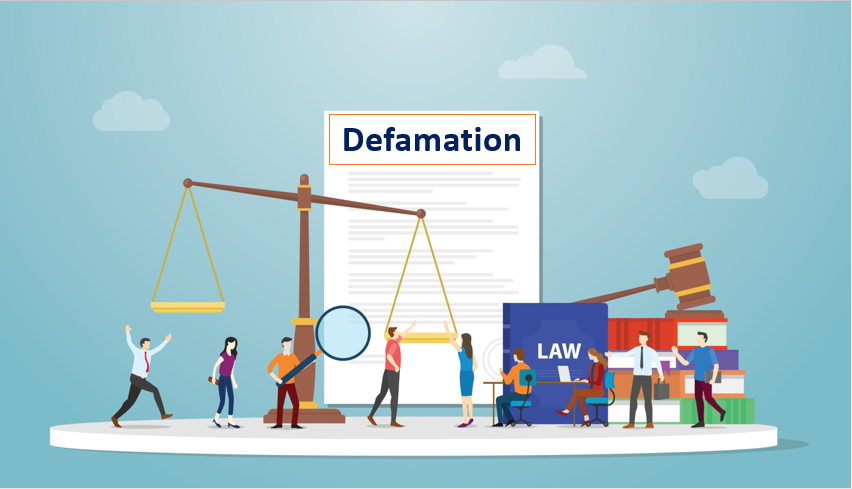Published on 3rd March 2025
Authored By: Pallavi Daruka
Durgapur institute of Legal Studies
Abstract
Cybercrime has emerged as a world concern in the line with the advancement of technology and open individual and corporate accounts to various legal lapses. Given the constantly emerging new technologies, it becomes a great challenge for legislators all over the world to update the cybercrime legislation. This paper focuses on the definition of cybercrimes, analysis of laws that currently govern computer crimes in different regions, including Budapest Convention, GDPR and Indian IT Act, and case laws including Shreya Singhal v. Republic of Egypt and United Mexican States Nosal. It also points to issues such as jurisdiction, privacy, and technical that are timeless to the online environment. Finally, with regard to protection strategies for modern societies against new information and communication technologies, solutions for developing dynamic legislation, international cooperation, and proactive legal measures that would enable the legal systems to explore new horizons in terms of technologies are presented.
Introduction
Technological factors and more specifically Information Technology can influence almost all contexts in the modern world. With these changes though are new threats one of which is cybercrime. Hackers remain relentless in using new technologies in their immoral and unlawful ways; Jurists, therefore, need to come up with adequate legislation in responding to new problems. This article discusses the way existing legislation against cybercrimes is evolving at present and the problems and possibilities of maintaining laws up-to-date.
The Nature of Cybercrime
Cybercrime means any criminal activity that is involving computers, computer networks or any digital devices whatsoever. Some of them are identity theft, fraud, data loss, piracy, cyber-criminal activity, cyber bullying, cyber terrorism and the rest. However, unlike conventional crimes, cybercrime can take place in the cyber space and across different borders making it difficult to enforce and investigate. The factors that make these crimes hard to solve are the internet and the unfolding of new technologies that makes it almost impossible to get to the perpetrator.
Here are some important Laws & Regulations enacted in India
- Information Technology Act, 2000 (IT Act, 2000) and the rules framed there under. The major law in India that deals with cybercrimes and electronic business. It contains provisions of data protection, formation of contracts through electronic means, cyber crimes and penalties for offences such as hacking, impersonation, cyber staking and cyber pornography.
- Indian Penal Code (IPC), 1860 Several sections of the IPC are used to deal with cyber crimes, including:
Section 66: Computer system hacking
Section 66C: Identity theft.
Section 66D: Computer fraud by impersonation.
Section 67: This is the electronic form of publishing obscene material.
Section 474: This involves having counterfeit electronic documents in ones possession.
- The Copyright Act, 1957 Covers the issues of protecting the intellectual property rights in the digital environment, and digital copyright violation.
- The Personal Data Protection Bill (Draft) A bill of courteous that proposes measures for the processing of personal data, individuals’ privacy and sanction of the violations of data protection provisions.
- The Cyber Crime Investigation and Prosecution (CCIP) Scheme. This scheme is to enhance the capability of law enforcement agencies to address cybercrime through support to the set up of cybercrime cells.
- The National Cyber Security Policy, 2013. Its objective is to design a safe and defended cyberspace for people, companies, and authorities to address cyber risks.
- The Blocking of Websites and Content This piece of legislation came into force and under section 69A, the government is authorized to block websites and any content link which is injurious to the nation’s security, sovereignty and public order.
- The National Critical Information Infrastructure Protection Centre (NCIIPC) Act It guards the important information infrastructure and stops threats to sectors like power, telecommunication, and transport.
- The Payment and Settlement Systems Act, 2007 Deals with electronic payment systems and the legal framework for handling disputes related to cyber transactions.
- The Digital Signature and Electronic Authentication Laws Legal provisions related to electronic signatures and the authentication of digital communications for contracts and business transactions.
Different countries have developed laws to avert cyber-crime. Below are some significant legislative frameworks
- The Council of Europe’s Convention on Cybercrime (Budapest Convention): The Budapest Convention was signed in 2001 and is a convention designed to help combat cyber-crime. It promotes collaboration by nations to fight wrong doings like unauthorized intrusion of systems and cyber fraud. It also has potentiality for nations wanting to fashion coherent criminal Gibbons code regarding Cybercrime (Council of Europe, 2001).
- The General Data Protection Regulation (GDPR) – European Union: Implemented in May of 2018, the GDPR is one of the world’s strictest data protection regulations. While it places significant obligations on companies to protect individual data, restricts the processing of personal data, and gives people rights in the matter including the right to erasure or to be not informed. The GDPR also applies to cybersecurity the principle of immediate notification of such an incident (EU, 2018, p. 23).
- UN Resolutions on Cybercrime and Cybersecurity: The United Nations has made recommendations asking states to ensure the passage of comprehensive national level cyber-crime laws and cooperate with each other to fight cyber-crime. The UN is interested in establishing a safe cyber space, with special reference to protecting infrastructures, privacy and encouraging legal mutual assistance in criminal affairs.
- OECD Guidelines on Cryptography and Data Protection: Even OECD has formulated some directions for member countries regarding cybercrime through cryptography and better ways to protect data. These guidelines promote collaboration with other countries on cybersecurity issues, safe guarding of information, data and information in global markets and the use of encryption to enhance security of the information.
- INTERPOL Global Cybercrime Strategy: INTERPOL unites the worldwide law enforcement for fighting cybercrime using the Global Cybercrime Strategy. It co-ordinates cooperation, exchange of information and capacity building for the purpose of enabling countries to deal with cyber threats adequately. This strategy addresses a myriad of cybercrime manifestations including cyber fraud and hacking, and cyber terrorism.
- EU Directive on Attacks Against Information Systems: Recently, the European Union has issued a directive to standardize its member states laws to the protection of information systems against cyber-attacks. This law criminalizes control of a computer without authority, unauthorized access to data or program, as well as cyber-attacks that interfere with a service or steal information. It also establishes the legal cooperation and approaches for extradition between country in fighting cybercrime.
Key Case Laws on Cybercrime
- Shreya Singhal v. Union of India (2015) – India: However, recently the judiciary of India led by the Supreme Court has rise to the challenge by nullifying section 66A of the Information Technology Act, 2000, by stating that it was unconstitutional in punishing people for posting information that was deemed to be offending. The court also delegitimized the provision because it interfered with the provision on freedom of speech and expression. This is a landmark judgement to determine the fine line between steps being taken against cyber criminals and respect for basic freedoms (Shreya Singhal v. Union of India, 2015).
- Google Inc. v. Oracle America, Inc. (2016) – United States: This is one of the landmark cases that the U.S. Supreme Court which deals with the matter of software classification in relation to copyright infringement and covers issues to do with the protection of copy right in digital content. The case concerned the key facts about the nature of Java and falling under copyright infringement laws, through which Oracle sought to claim that the Android operating system developed by Google contained a violation of some parts of the authorized Java code. This case highlighted the prospects of the ever-evolving legal issues on intellectual property regarding technology advancements (Google Inc. v. Oracle America, Inc., 2016).
- United States v. Nosal (2012) – United States: The case discussed in this article is the Ninth Circuit Court of Appeals’ decision on a case whereby David Nosal was charged with the act of computer fraud by hacking into his former employer’s computer system and copying confidential information there from. In this case the court explained how they eventually implemented the CFAA and what was considered as exceeding the authorization. The ruling helped define the boundaries of cybercrime involving unauthorized access (United States v. Nosal, 2012).
- Agarwal v. BSE Ltd. & Ors. (2020) – India: The Bombay High Court discussed the stock manipulation through electronic media and social networking sites. The case emphasized that there is a need to enhance the sufficiently protection measures that are required to address the miscreants who use social engineering techniques to conduct illegal financial activities through social networking websites by setting the benchmark for dealing with financial cyber-crimes in India (Agarwal v. BSE Ltd., 2020).
Difficulties in Cybercrime Law
- The Speed of Technological Advancements: The laws governing the application of technology are in this case having a hard time keeping up with the rate of evolution of the technology. New technologies, such as blockchain, artificial intelligence, and quantum computing are new opportunities for cybercriminals. It becomes difficult for the legislators to predict these advances and come up with legislation that will not become outdated. For instance, concerns have been raised as to the application of technology such as blockchain in unlawful exercise such as money laundering.
- Jurisdictional Issues: Most cybercrimes have an international dimension, thereby making it difficult for law enforcement agents to implement the law. An attacker in one country might attack people or organizations in another country – a situation that poses great difficulties for police work. Laws vary among countries and this poses a lot of incongruences when working together – an issue that holds down effective prosecution (Interpol, 2023).
- Privacy Concerns: To curb cybercrimes, governments and companies are now increasing implementing more surveillance mechanisms. However, these measures can be a disregard of people’s right to privacy. The justice between cybersecurity and the right to privacy is a sensitive issue. Scholars noted that legislators have the task of shielding the inhabitants from cybercriminals but cannot infringe on their rights and liberties (Privacy International, 2020).
- Technical Complexity of Cybercrimes: Most computer crimes must be worked using certain level of comprehension of how computers and the Internet work. Police organizations may not possess the necessary equipment or qualified personnel to manage intricate incidents, particularly introduced practices such as secure messaging or sophisticated cyberattacks (Zeter, 2017).
Keeping Pace with Technological Advancements: Possible Solutions
- Dynamic and Adaptive Legislation: An important feature of the modern legislation on cybercrime is flexibility. Laws should hence be created to change as new threats arise hence requiring its revision frequently. For example, instead of amending laws for new types of cybercrimes, technology-neutral language can present an approach (Kesan & Shah, 2020).
- International Cooperation and Harmonization: As cybercrime is an international problem, international cooperation is inevitable. Ministries of countries should cooperate and regulate laws to be as close as possible to each other and to have more information about the new threats. The Budapest Convention can be considered as a solid foundation for such cooperation, and it is desirable that more countries will accede to or ratify such instruments (Council of Europe, 2001).
- Investing in Cybersecurity Education and Expertise: The governments and private sectors should put efforts to provide the law enforcement agencies necessary cybersecurity awareness and training. Thus, authorities can prevent complex cybercrimes by creating the relevant specialized units with the required subject knowledge and means. Moreover, collaboration with the universities in the IT, communication and cyber security domains may minimize the skills deficiency (Foley, 2020).
- Fostering Public-Private Partnerships: Cybersecurity is not strictly a government issue. Many problems can be solved more effectively only in cooperation between the public and the private sectors. Governments must engage the companies in the technology industries and the financial institutes and other sectors and partners that are most vulnerable to the threats posed by cyber criminals to formulate the best strategies of dealing with the menace. It is also important that through the public private partnership, there is sharing of such intelligence in combating cyber criminals (Peltier, 2019).
- Proactive Legal Measures: Hence, the law should not aim to address certain cybercrimes once they are manifest, and take effect thereafter. Implementing cybersecurity habits like penetration tests and group use of better encryption can lower the chances of cyber risks much for corporations. Even, the detention of ethical hacking programs and bug bounty can play an important role to trace the weakness before exploitation (Anderson, 2021).
Conclusion
Hacktivism is a constantly developing threat that challenges the steering of innovative developments. Current legislation has opened a way towards fighting cybercrimes, but it seems to be quite stagnant and unable to adapt to new technologies. To illustrate the urgent need for enhancing legal response to cybercrime, lawmakers have to enact balanced elastic laws which would facilitate not only international cooperation, but also call for expertise and precautionary measures. Thus, only thanks to such activities, societies can respond to the constantly increasing dangers of cyber threats and build a threat-free digital world for everyone.
References
- Anderson, R. (2021). Security Engineering: A Guide to Building Dependable Distributed Systems. Wiley.
- Böhme, R., Christin, N., Edelman, B., & Moore, T. (2015). Bitcoin: Economics, technology, and governance. Journal of Financial Economics, 8(2), 165–178.
- Computer Crime & Intellectual Property Section. (2020). Computer Fraud and Abuse Act. United States Department of Justice. https://www.justice.gov/criminal-ccips
- Council of Europe. (2001). Convention on Cybercrime (Budapest Convention). https://www.coe.int/en/web/cybercrime
- European Commission. (2018). General Data Protection Regulation (GDPR). https://ec.europa.eu/info/law/law-topic/data-protection_en
- Foley, M. (2020). Cybersecurity in Law Enforcement: Strengthening Investigations. Journal of Law and Cybersecurity, 14(3), 67–85.
- (2023). Global Threat Assessment: Cybercrime. https://www.interpol.int/en/Crimes/Cybercrime
- Kesan, J. P., & Shah, T. H. (2020). Cybersecurity Laws and Regulations: Current Developments and the Need for Reform. Harvard Law Review, 133(4), 123–145.
- Ministry of Electronics & IT, India. (2011). The Information Technology (Reasonable Security Practices and Procedures and Sensitive Personal Data or Information) Rules, 2011. https://www.meity.gov.in
- Peltier, T. R. (2019). Information Security Policies, Procedures, and Standards: A Practitioner’s Reference. Auerbach Publications.
- Privacy International. (2020). The Intersection of Privacy and Cybersecurity: Balancing Surveillance and Freedom. https://privacyinternational.org
- Shreya Singhal v. Union of India (2015). 5 SCC 1.
- United States v. Nosal (2012). 676 F.3d 854 (9th Cir. 2012).
- Zetter, K. (2017). The Hacker Who Knows Too Much: How Cybercriminals Evolve to Stay Ahead of Law Enforcement. Wired. https://www.wired.com


